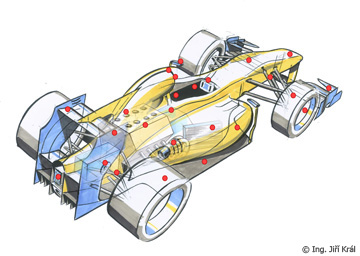Brake Clamps
Miroslav Sanytrák/Boris Dacko | 7.7.04 | Brembo F1 brzdy
F1 constructors
The FIA regulations permit only one clamp for each wheel, whereas there may be a maximum of six brake pistons. Large brake discs allow the use of larger brake pads reaching thus higher friction and braking force. The higher number of pistons is necessary to obtain balanced pressure on the braking pad. The F1 brake system is hydraulic being pressurized by a main braking cylinder. There are two circuits, similarly to stock cars, one for the front and one for the rear wheels. The brake clamps are significantly bigger at the front axle. The car weight shifts forwards during braking, consequently more powerful brakes are needed there. The damped energy is turned into heat which may reach as much as 1000ÂşC in case of an F1 car. Although heat resistant composite materials are used, the heat needs to be channelled away, for which purpose is used the ram air lead in by brake ducts. The front brake clamp is about 250x170x60 mm big and about 1.5 kg heavy. The constructors try to achieve lowest possible weight as it belongs to the unsprung mass. The clamps are made of alloys of aluminium, titanium or carbon composite. A car needs about 50 - 60 clamps per season.
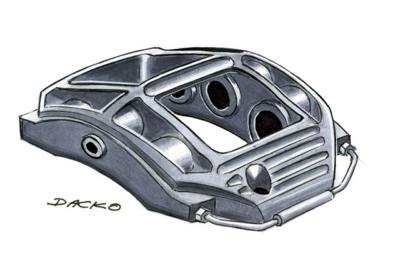 |
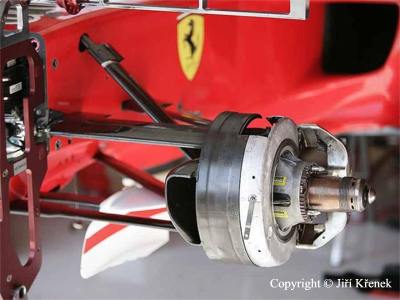 |
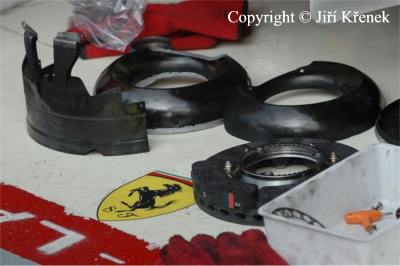 |
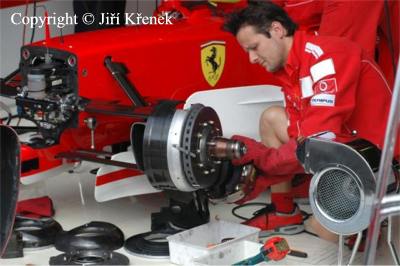 |




